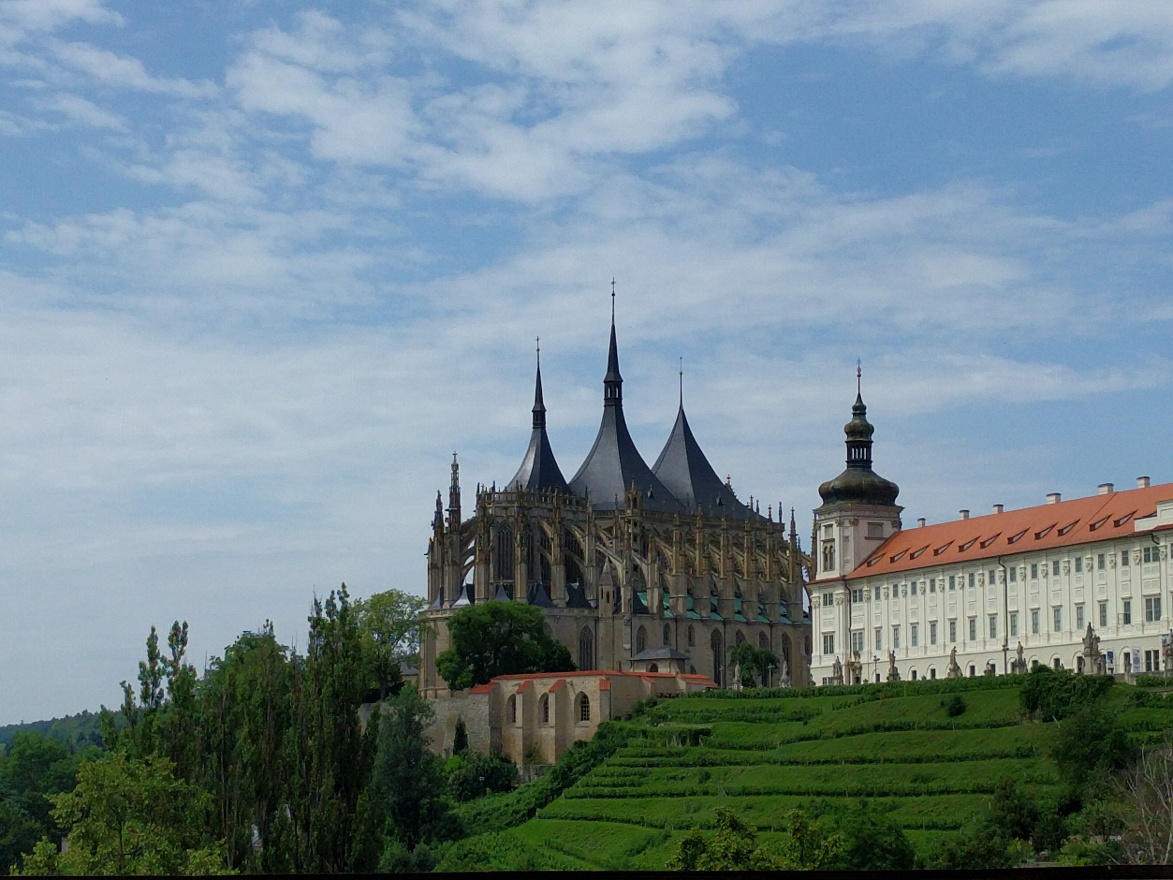Central Europe
We recently returned from spending three weeks travelling around central Europe. Specifically, we spent time in Czechia, Austria, Hungary, Slovakia & Poland. Overall, it was a fun trip, although there were some lessons to be learned.
While its no surprise that everyone & their pet visits Europe in the summer, I didn't quite realize how crazy it was in some places. Also, I'm no fan of heat & humidity, and Europe has tons of that in the summer. That alone wouldn't have been too bad, except that AC seems to be this quaint concept. Few places had it, and those that did, opted to set the temperature so high that it did little good. I'm still quite puzzled by this behavior, but I guess its a cultural issue?
Poland absolutely loves pizza. I have no clue why. I like it, but Poland takes it to an entirely new level of obsession. Regardless of where we went, the one food that we could reliably find was pizza. In small towns, we'd often find more than half the restaurants either served pizza on the menu, or served nothing but pizza. In larger cities, it was inevitable that we'd come across multiple pizza places. I don't understand why pizza is so popular. The times that we ate it, they did a reasonably decent job, but why pizza? Its just such a random thing.
Our primary airline, Condor, is an awful awful airline. They primarily market themselves to package tour groups, and for whatever reason seem to straddle the worlds of budget (low cost) and 'normal' long haul airlines. While they didn't resort to charging for every little thing, the stuff that they did provide was so incredibly mediocre, that I honestly would have preferred that they charge. For example, the food was disgusting, and borderline inedible. Their in flight entertainment system offers a total of 2 free movies (which they pre-select), and if you want more, you have to pay. I don't care nearly as much about this, as I typically bring my own entertainment, but it exposed how I actually tend to fall back on some random mindless film on most flights, and with Condor I simply didn't have that option. Quite possibly the worst part was the leg room. Unless you pay significantly more for their "Premium Economy" product, you're stuck in 'normal' economy where the legroom was easily the most limited I've ever encountered on any long haul flight. My knees were firmly pressed up against the seat in front of me at all times. It was painful. It was awful. This should be a human rights violation. I'm kinda surprised that the EU hasn't actually mandated minimum leg room on carriers. Additionally, their flights departed late every time, by at least 30 minutes. We will not fly Condor again, regardless of how cheap they are as compared to the competition. Their crapitude, coupled with the need to make 2 connections made it evident that its not worth the aggravation, stress & suffering.
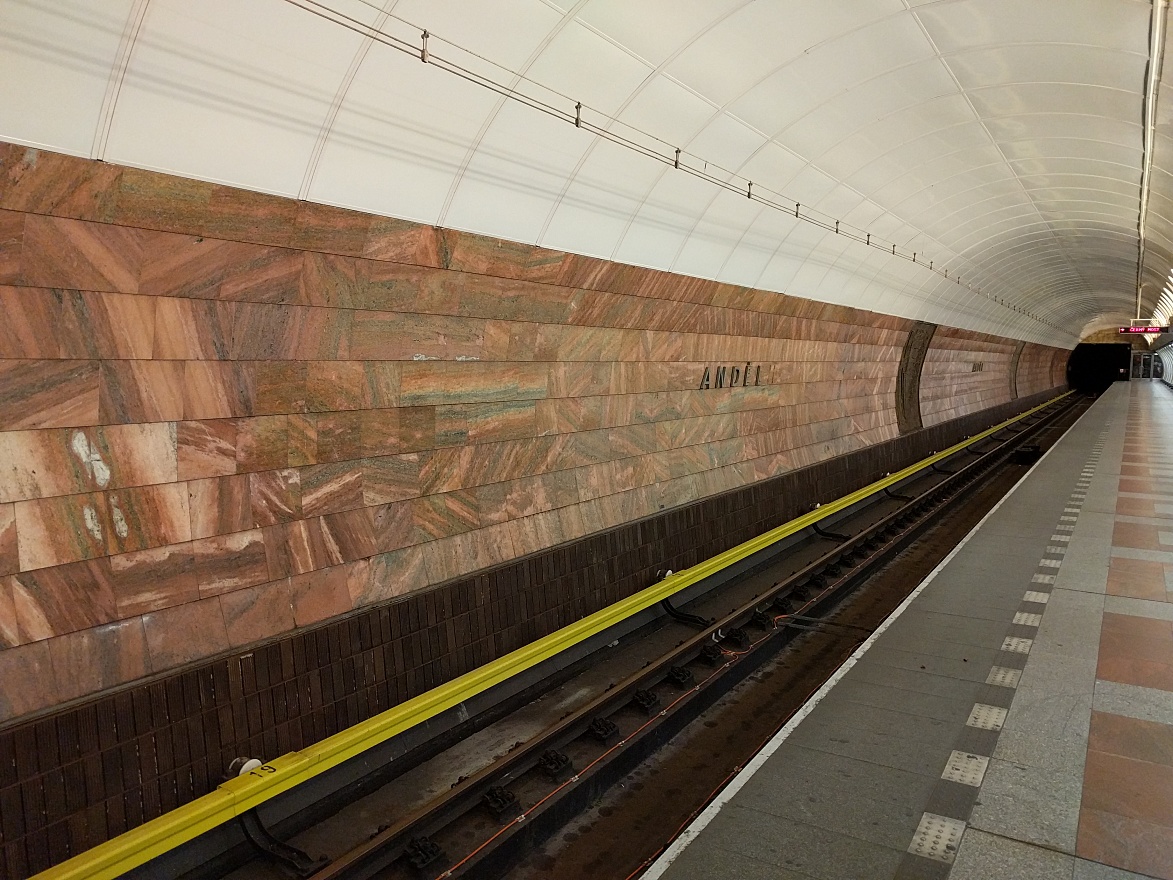
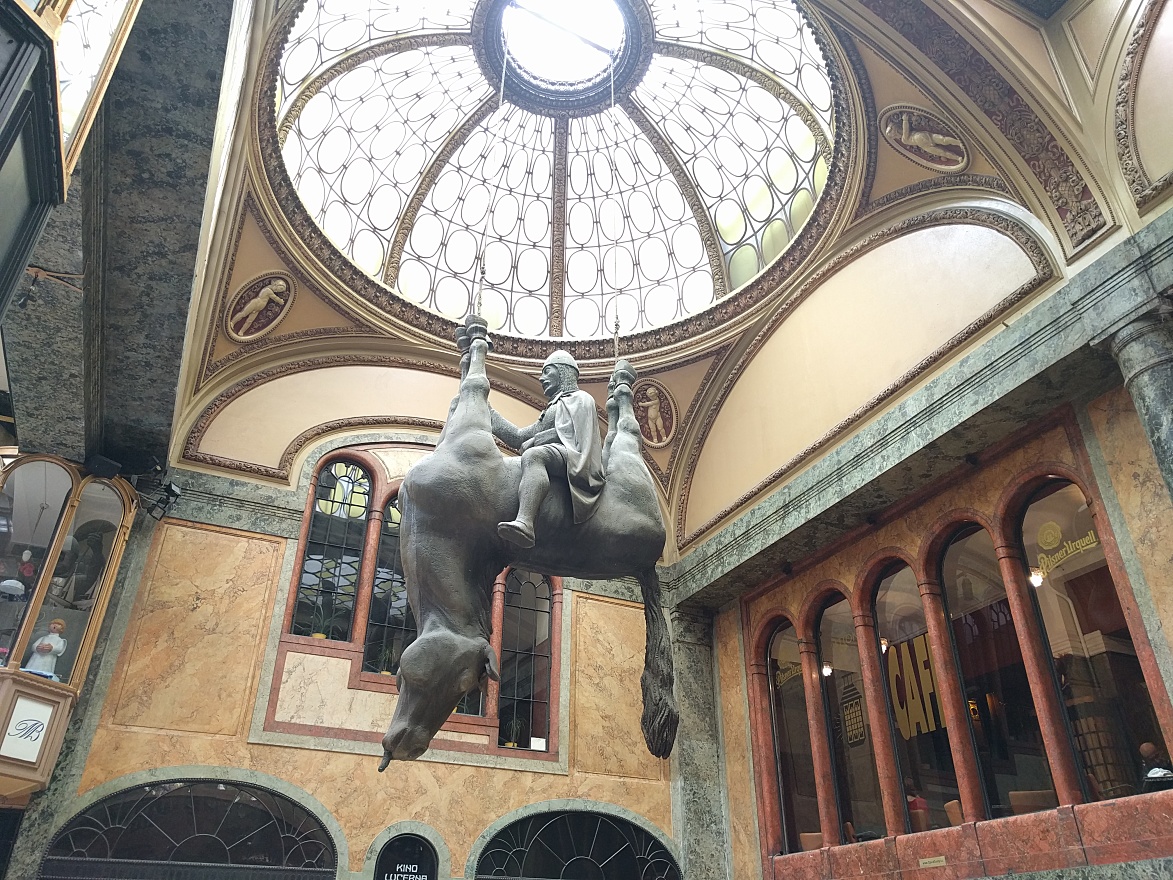
The majority of the trip was spent in Czechia and Poland. We spent just 2 nights in Hungary (Budapest), and Austria & Slovakia were literally drive throughs (where we stopped for lunch & gas). Rather than talking about every single thing we did & saw, I'll touch on the highlights.
Prague is a charming, quaint small city. We spent 3 nights on the west side, in what may have been the best hotel of the entire trip (Hotel Julian). Very comfortable, quiet room (with fully functional AC!), a spectacular buffet breakfast, and relatively convenient public transportation in walking distance. Prague Castle is gorgeous, but in summer, its simply too crowded to enjoy. Petrin Hill (the largest public park in the country) is a real gem. Lots of paths & trails, with lots of fantastic views of the city. But as its name suggests, most of the park is on a hill, so you're going to get a work out. Unless, of course, you cheat and take the funicular to the top, but then you will miss out on a lot of the quiet corners of the park (apparently including the US Embassy compound, which we accidentally came upon). The Jewish Quarter is really just in name at this point. While the old synagogues & cemetery are still there (with the crowds), there's really not much else. That's not to say that it wasn't worth exploring the area. The cemetery is fascinating & sad all at once. Hundreds of grave markers, nearly stacked on top of each other, often so old & weathered as to make them unreadable. But don't expect to find a vibrant Jewish community, its all historical at this point (thanks to the atrocities of the Holocaust). One other gem is a scattering of completely insane David Czerny sculptures around the city. Every single one is a head scratcher. We spent a couple hours across 2 days hunting them down, eventually finding 7 of them. David loved them, and we were all quite amused by them, despite not even seeing a quarter of the total.
Before departing Prague, I picked up a rental car from Dollar (at the airport), which turned out to be actually run by DVORAK RENT A CAR, where they gave us a bright blue colored Skoda Fabia. This required a trip back to the airport, and I used Uber. This worked out quite well, and I ended up using Uber 4 times between Prague & its airport. It is a bit puzzling why there isn't a more efficient way to travel between PRG and the city center. The airport is a solid 30 minutes drive from the city, yet the only public transportation is a very slow bus. Thankfully, Uber had a presence, and I ended up paying about US\$15, which is quite a bit less than a taxi, and much faster than the bus. There are rumors that a light rail line is going to be built, but as far as I can tell they haven't even broken ground yet.
Driving around Czechia was all at once frustrating and fun. This was to become a common trend in Poland as well. For whatever reason, they have few true freeways, and most long distance travel is on 2 lane roads. Sometimes it was great, passing through tiny villages (with their ancient squares & churches still in use). But other times, we were stuck behind long lines of trucks & cars, crawling along on crowded roads, all while attempting valiant passing manoeuvres in the lane of opposing traffic. This scenario also often made Google Map's driving time estimates laughably inaccurate, as they assumed ideal driving conditions (no traffic, perfect weather, no road closures or construction). In reality most days, driving times were upwards of 25% greater than what we expected.
Upon departing Prague, we initially headed west over to Plzn, via the very small remote village of Lukova. This town has a 700 year old decaying church, which an artist has populated with 'ghosts'. Little did we know that the town has at least 3 roads leading to it, but only 1 of them is paved. Google's "helpful" navigation is either blissfully unaware of road quality, or simply doesn't care that its routing you on a dirt track that is of questionable condition. While we got into town ok, our planned route out was literally blocked by a fallen very heavy, immovable tree. We ended up having to back out of the dirt road, and re-route towards Plzn where we intended to have lunch at the Pilsner Urqell brewery complex. For the most part, this place is a vast tourist trap. The staff were flat out rude & surly (refusing to give change for a beer purchase from a large bill, demanding a tip after atrocious table service, etc). Also, Denise & I are apparently not fans of Pilsner beer in general, so despite trying everything they had on tap, we didn't really care for it much. After the lunch stop, we continued on to the ancient town of Český Krumlov. Denise found the town disappointing because it looked a bit too "perfect". I thought it was nice enough, despite being absolutely mobbed by tourists. We spent the afternoon exploring, although our dinner was quite possibly the worst meal of the entire trip. Really expensive, poor quality food, and atrociously bad service. It was interesting how quickly the town cleared out after the day trippers headed back up to Prague.
The next day we headed off to Budapest, by way of Vienna, Austria. This was supposed to be a 5 hour drive, but turned out to be nearly 9 hours after factoring in an assortment of hassles. The roads in Czechia continued to be a bit of a pain. But once we entered Austria, road quality improved dramatically, and we were making fairly great time. One quirk that I had neglected to be aware of in advance was that most countries in Europe have a bizarre system of financing their freeways, which requires the pre-purchase of time limited toll sticker (or in some cases an online purchase which is tied to the license plate of your vehicle). I ended up purchasing the sticker for Austria at a gas station immediately after entering the country. We had lunch in Vienna at a really great place called Bier & Bierli. Great Austrian food & beer (although holy crap, I forgot how much more expensive Europe can be). However, trying to get back onto the freeway towards Budapest was an exercise in futility. For the majority of the trip, we were using Open Street Map data for navigation, since we didn't want to spend a fortune on a data plan. We learned the hard way that these maps are often completely wrong if not out of date in urban areas. One way streets were frequently not marked on the map, and occasionally, entire streets were missing. As a result, we spent over an hour nearly driving in circles trying to get to the freeway. However, once we finally got on, driving was an absolute joy. The Austrians have clearly duplicated Germany's autobahn system, and the road was wide, and oh so fast. I was doing nearly 160kph and people were still blasting past me with reckless abandon. Once we crossed the border into Hungary, things weren't quite as good. People still drove fast, but the number of lanes was reduced, and about 30km south of Budapest, we got caught in a truly horrific jam due to a flipped truck blocking a lane. What should have taken 15 minutes ended up taking nearly 90, which put us into Budapest at the height of the evening rush hour, further delaying our arrival. Additionally, we were Budapest at the peak of a brutal heat way, with temperatures hitting nearly 100F, with equally miserable humidity.
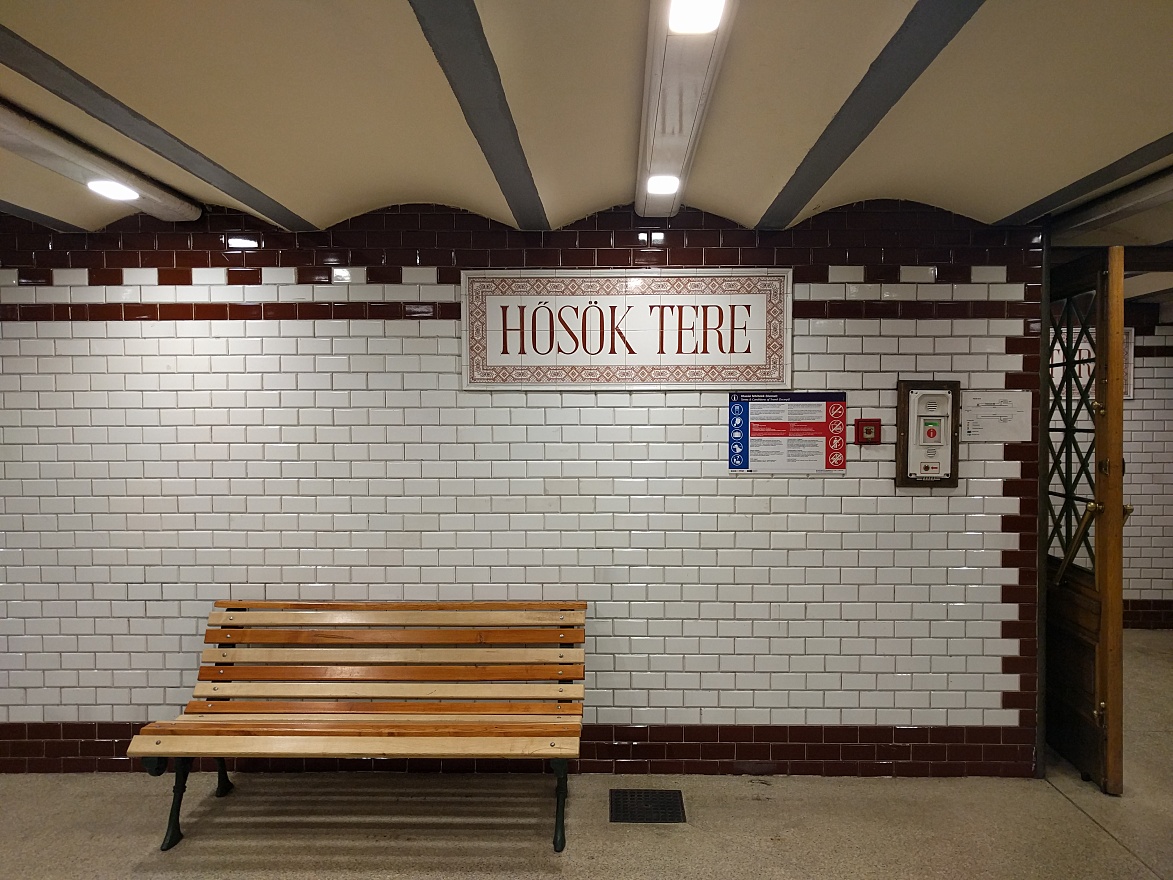
Despite the awful weather, we had a truly fantastic time in Budapest, and in hindsight wish that we could have spent much more time there. We barely had more than a single full day, which was jam packed from morning to night. We started the day doing a private guided tour of the old jewish district, which was easily one of the best walking tours I've ever done. Our guide was knowledgeable, personable, and really provided great insight into the history & life of the neighborhood. After lunch, we took Budapest's excellent metro system across the city to the Hospital in the Rock, which was a great tour of a historically relevant piece of 20th century history. Also, it was a solid 20F cooler inside, which was truly refreshing after hiking up there in the brutal heat. After that, we spent several hours at one of Budapest's famous baths (which are really more of a public pool), Széchenyi Thermal Bath. While David & Denise definitely enjoyed the bath more than I did, it was still a really nice, unique experience. Then for dinner, we went to a fantastic quirky traditional restaurant, Paprika. I think I ended up describing the interior décor as a Hungarian version of Cracker Barrel.
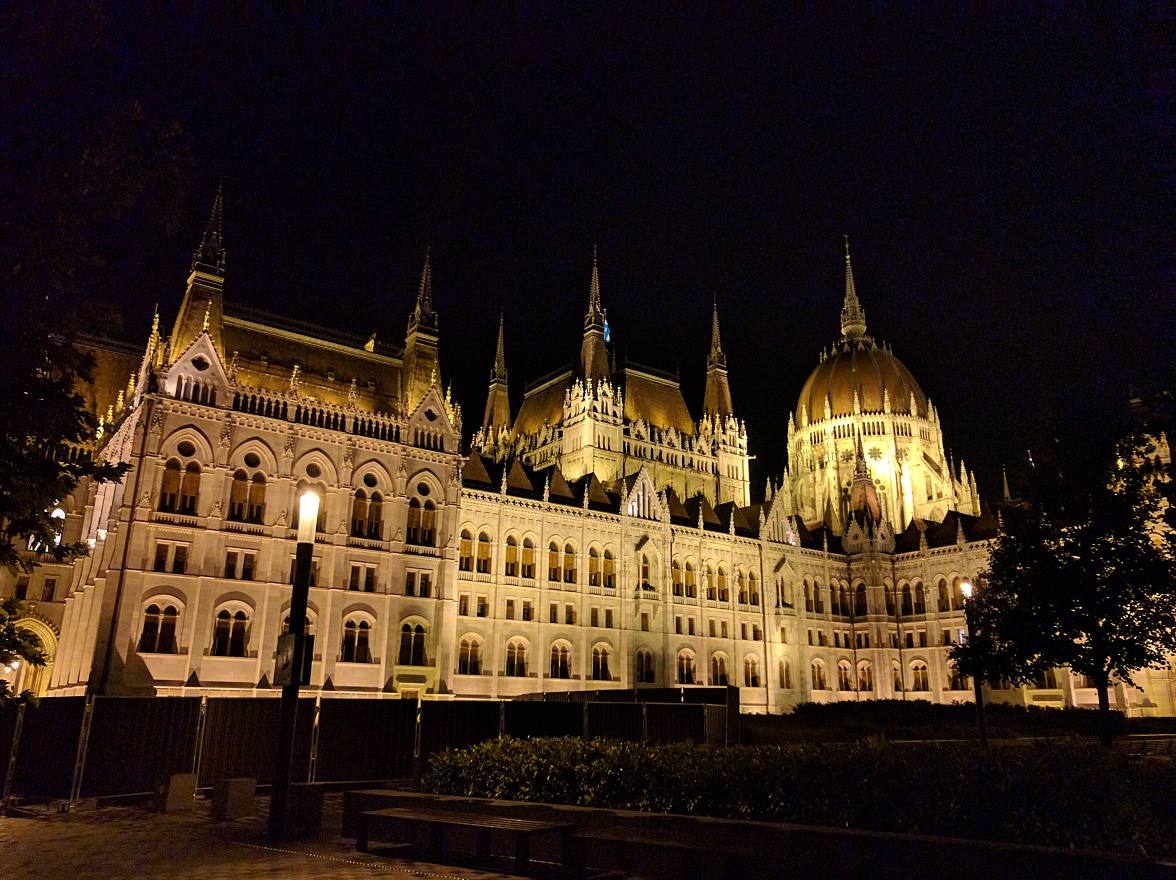
The next day we drove north, and entered Poland, via a route that often felt like something out of Deliverance, with a single lane road meandering through the mountains, and suddenly depositing us in Poland with little fanfare. I get the EU has open borders, but even crossing state lines in the US at least has a bit more festivity behind it. We spent that night at a cute little AirBNB in the town of Oswiecim. This town would be mostly unknown if it wasn't for the sordid history that took place at its Auschwitz death camp during WW2. We spent half of the next day at Auschwitz. I'm rather conflicted about Auschwitz. While I fully agree that everyone should visit a WW2 era concentration camp, I'm not at all convinced that Auschwitz is the one to provide the most impactful experience. We've been to Dachau (outside of Munich), Madjanek (outside Lublin, Poland, near the Ukraine border), and Auschwitz. Auschwitz was easily the worst experience. And by worst, I mean, it felt like huge tourist trap. Even ignoring the food & drink stands, it is simply way too crowded. Its literally non-stop large guided fours, with no break. Everywhere is 30+ people in the group ahead of you, 30+ in your group, and another 30+ behind you. You spend the entire time marching in a long line from one room & building to the next. You can't stop to linger on anything for more than a few seconds, because you're holding up your group, and you're holding up all the groups behind you. Plus, in any situation with large numbers of people, there's the inevitable jerk who can't be respectful, and feels the need to be loud, distracting and generally obnoxious, even when the sign explicitly requests that they not speak inside the gas chambers. All in all, it adds up to an unpleasant tourist assembly line, rather than the solemn war crimes site that deserves peace & time to absorb the magnitude of the atrocities that took place there. Contrast Auschwitz with somewhere like Madjanek, that likely has fewer than 200 visitors on a busy day, and the biggest distraction is the ever present wind. I found the exhibits were of much higher quality, and the site was far more impactful. I realize that for most people Auschwitz will be the only concentration camp that they ever visit. If the number or size of tour groups is reduced, it likely means that fewer people will get to see this atrocity. But at the same time it feels like Auschwitz is opting for quantity over quality, which does a huge disservice to those who suffered & died there, and those who are now visiting trying to make sense of it all.

After Auschwitz, we drove another hour or so east to the city of Krakow, and visited the Oskar Schindler Museum. Most people now know of him from the movie which bares his name. This museum was everything that Auschwitz was not. While it clearly isn't a concentration camp, it covered much of the same themes, providing a very detailed, well thought out history of what life was like in Krakow, particularly for the Jews, before & during the war. While there is one 20 minute documentary and one exhibit room that specifically covers Oskar Schindler's role, the museum is primarily about Krakow & Poland's people. Four floors of chronological exhibits brought the material to life, and really accomplished what several hours at Auschwitz could not. This museum does not get nearly enough credit or attention (although it was definitely no ghost town). Overall, I enjoyed Krakow much more than Denise or David. I'm not sure why, but I found the incredibly amount of history everywhere so fascinating. Not just 20th century history, but centuries & layers of history everywhere we went.
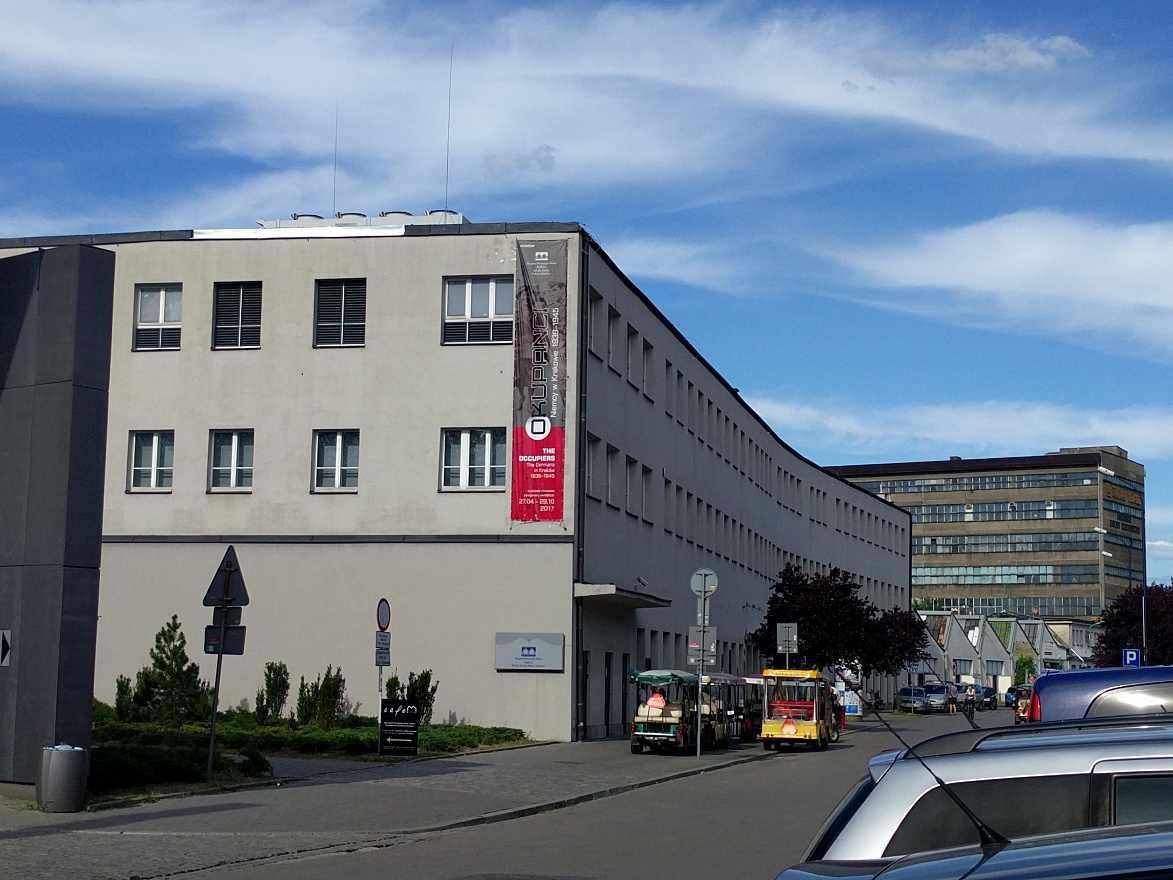
Our last day in Krakow, wasn't even in Krakow. Southern Poland has a large number of all wooden construction churches dating back to the 14th & 15th centuries. Six of them are on the UNESCO list, and have a truly unique architecture that I found fascinating. From the outside, they look as if someone bolted a clock tower to the side of a barn. Over the course of the day, we visited all 6, although we were only able to enter one of them. Each was unique in some way, although the last one might have been our favorite. For much of the day, the weather was cloudy, and occasionally rained. However as we approached the last one, the skies had finally cleared, and as it was late in the day, the light was warm & soft, making the church glow. One other bizarro event that day was when I was pulled over less than a mile away from a church for speeding. Initially the cop was pulling some hard charger game, quoting me a 550zl fine (nearly US\$125) for going about 30kph over the (not posted) limit, and demanding that I pay him in cash immediately. However, he asked where we were going, and when Denise pointed out that we were about to visit the church just up the road, his entire tone instantaneously changed, and suddenly he was super friendly. But even more amusing, he reduced my fine by 60%. I guess in Poland, you can (almost) get out of a speeding ticket if you claim to be going to church?
On a side note, street parking is almost never free in urban areas. I have no objections to this policy, as I agree that dis-incentivizing car usage is a good thing, and something that I wish the US would learn to do. However, paying for the parking was often an exercise in frustration. Everywhere the fee is paid to some parking box (usually one per block). However, the interface on these boxes was never consistent from one city to another. Sometimes the instructions were available in English, other times not. They almost never accepted cash, but required coins. Sometimes they accepted credit cards, but not always. It was always a game to figure out how to use the parking box.
As we departed Krakow, we stopped at what might be the second most famous tourist attraction of the region (after Auschwitz), namely the Wieliczka Salt Mine. I'm not exactly sure what we expected, but we definitely didn't get it. The tour was this crass mixture of tourist trap (gift shops, salt sculptures & light shows?!?) and mine. Maybe a quarter of the tour was actually interesting, but the rest was just fluff & filler. The worst part was getting out of the actual mine. For reasons that remain a mystery, they have this massive bottleneck to ascend out of the mine, where there are just 4 very tiny elevators (each holding maybe 8 people). This creates a huge backup, but even finding the elevators is this guessing game, as there are no signs in English, and no one was speaking anything but Polish. Sure, we're in Poland, Polish is their language. But literally 75% of their tours every day are English tours. Yet they seem to have forgotten (or intentionally neglected) to cater to their primary customers when exiting the mine. Anyway, its not really worth the time or money in our opinion. Later in the day we visited the small village of Zalipie, which is famous for having lots of hand painted flowers on every man made surface. Much of the online discussion seemed to suggest that there were literally a dozen (or more) homes with the art, but when we got there, we found 3 or 4 total (and one of them was a fake prop setup for tourist photos). It was all free, so I can't call it a rip off, but it seemed kinda misleading. Our theory is that decades ago there were way more, but many of the structures have since been replaced with modern construction that either no one alive is able to paint, or wants to paint. We spent that night in the city of Lublin, in eastern Poland, which set us up for the next day's events.
The next day we explored the Majdanek State Museum, which is at the site of the Majdanek concentration camp. This was the first concentration camp to be preserved as a museum, and in our opinion, was the best of the 3 that we've visited (from discussion above). Quite possibly the biggest win was the sheer lack of visitors to the site. We likely saw fewer than 50 other people the entire time we were there, despite there being a number of excellent exhibits and restored buildings.
After Lublin, we drove to northern Poland, and spent time in the city of Torun. In many ways, Torun felt similar to Krakow (and later Wroclaw), with a well preserved old town. However, the highlight was actually a day trip we took about 90 minutes drive north to Malbork Castle. Its the largest castle in Europe, and the audio guide walking tour that they provide is easily the best I've ever experienced. It had some kind of GPS like means of detecting where you were at all times, such that the tour was perfectly synchronized with your current location, and provided guidance if you wandered off the official tour route. But beyond that, the castle itself was incredible. The sheer size provided so many opportunities to cover a very wide range of topics, from religion, to food, to architecture. Later that afternoon, after returning to Torun, we visited the Gingerbread museum, which sounded amazing based on the website, but in reality was kinda cheesy, and borderline tourist trap. Their website makes it seem like they offer English language tours, but in reality, they lump everyone together, and then very lazily translate some of what they're saying in Polish to English. Often, someone would have to remind them to translate, and even when they did, it seemed like they were giving a very abbreviated English version of the much more lengthy Polish dialogue. Additionally, they had some weird "witch" act going on, which didn't make much sense in terms of explaining how gingerbread is made, or its history. Yet for some reason, the place is wildly popular, and tickets sell out often months in advance.
The very last city that we spent time in Poland was Wroclaw (pronounced Vrotzlef, because Polish is hard). Wroclaw was nice, and its old town was quite pretty. But it as also kind small, and not as well defined as the old towns in the other cities that we visited. They do, however, have one thing that is quite unique, and its their bronze dwarfs which are scattered about the city. We found about a dozen, and they were incredibly cute & amusing. If I have any regrets, I wish that we had more time to track down more of the dwarfs.
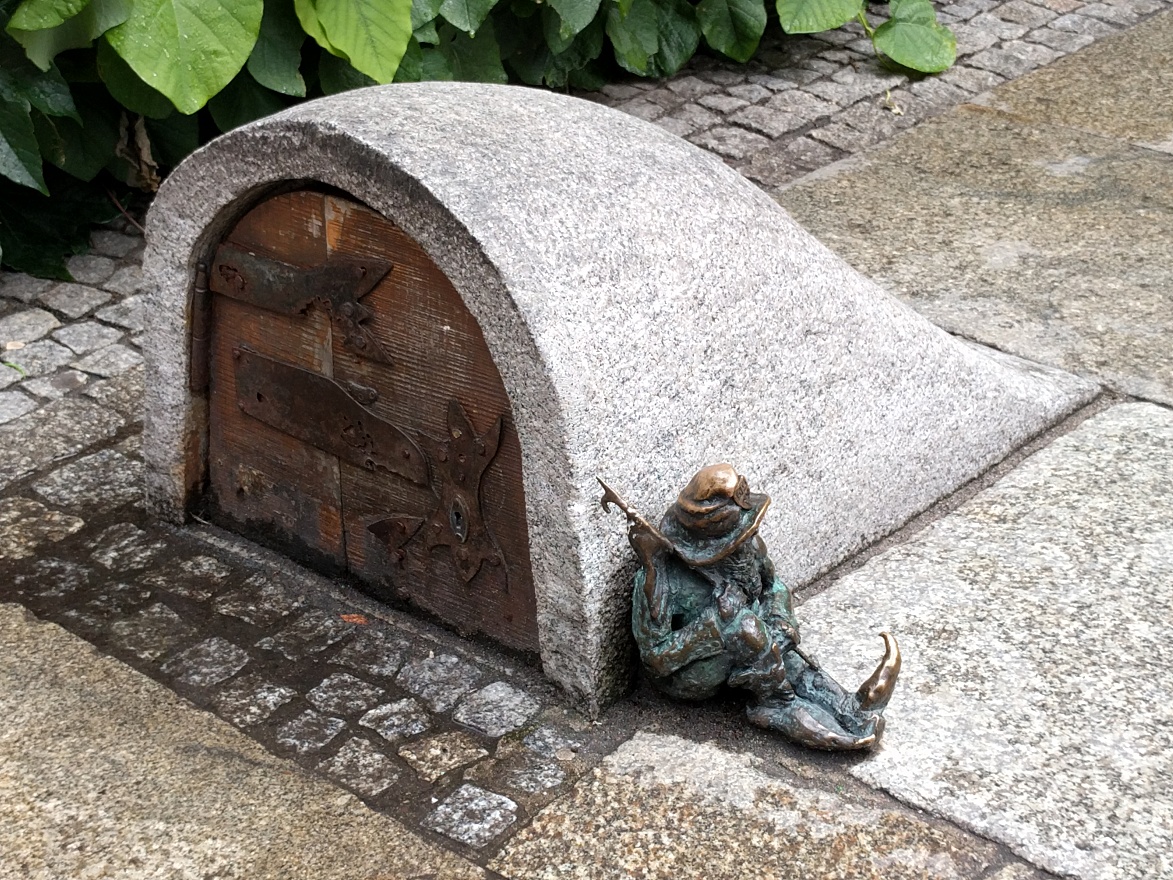
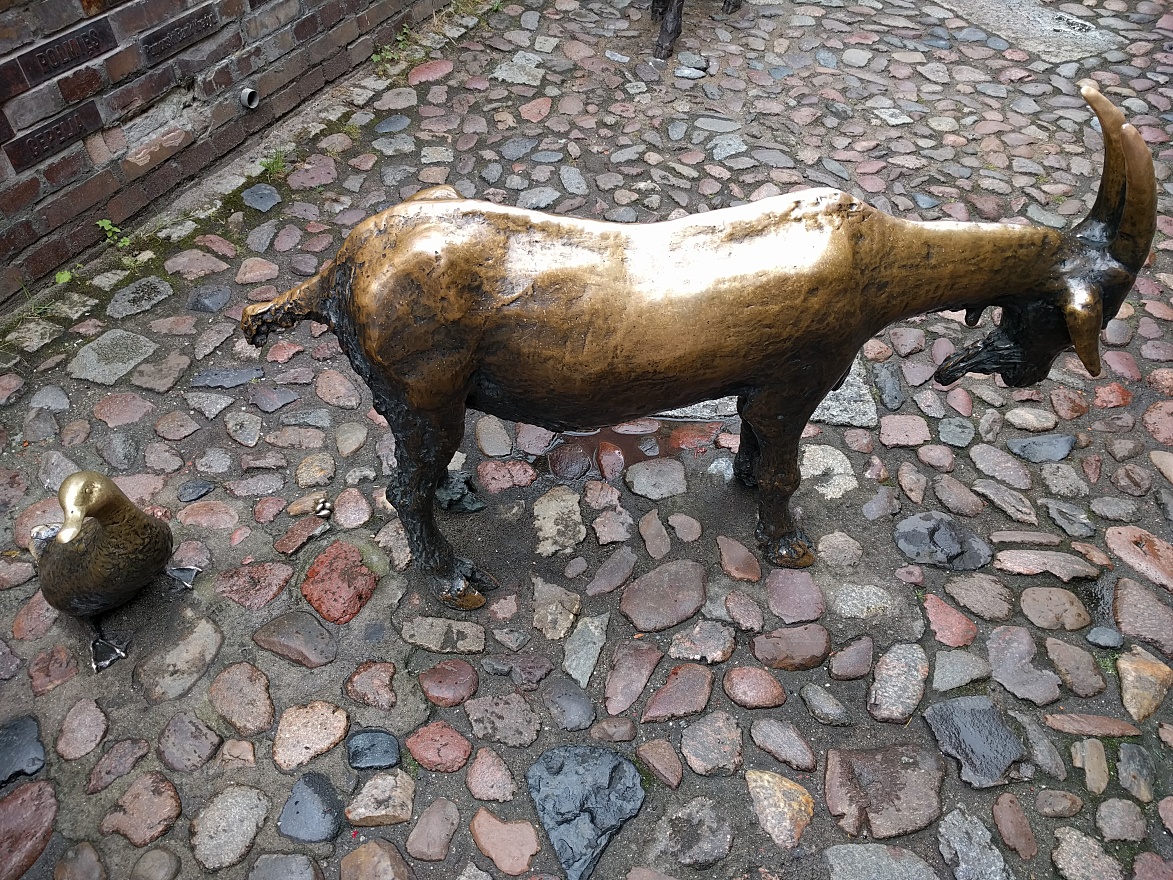
The last town that we spent time in on the entire trip was back in Czechia, Kutna Hora. The primary reason for visiting was the Sedlec Ossuary. However, the old town was a surprise gem from my perspective. Lots of narrow alleys, and a multiple spectacular churches, including St. Barbara's.
For the curious, here's the majority of the route that we drove. We ended up driving over 3600km:
<iframe frameborder="0" scrolling="no" src="//www.wikiloc.com/wikiloc/spatialArtifacts.do?event=view&id=18686798&measures=off&title=off&near=on&images=off&maptype=M" width="640" height="500"></iframe>
::: {style="background-color:#fff;color:#777;font-size:11px;line-height:16px;"} :::
Additional photos of the trip are posted HERE.
